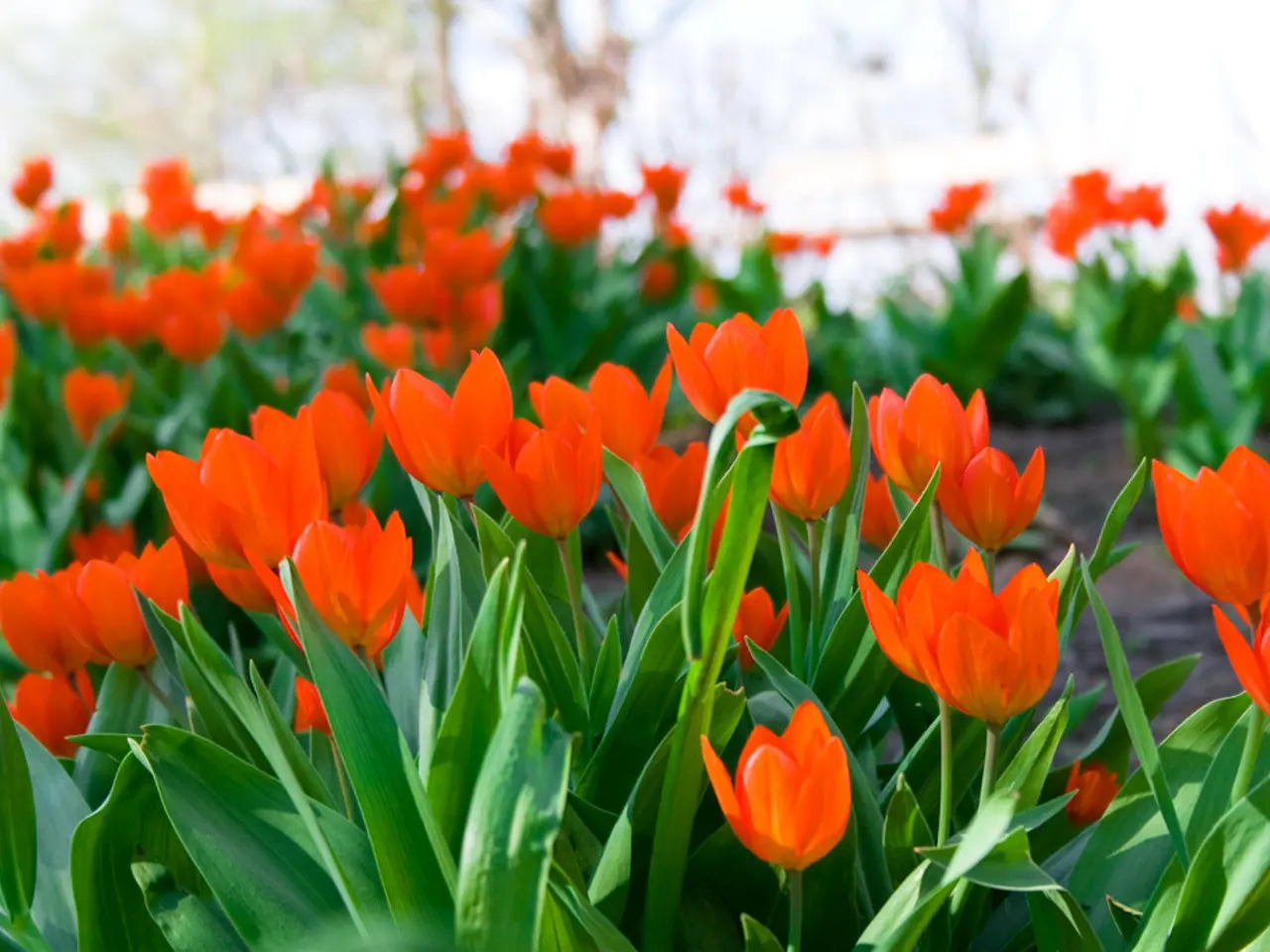Cultivating the Ideal Tulip Flower Bed: A Comprehensive Overview
Tulips, with their vibrant colours and delicate beauty, are a popular choice for many garden enthusiasts. Here's a step-by-step guide on how to grow these enchanting flowers in your garden.
Choosing Varieties
Selecting the right tulip varieties is crucial for a successful bloom. If you're aiming for lasting blooms, opt for types known for multi-year performance such as Species Tulips, Darwin Hybrids, Fosterianas, Greigiis, Kaufmannianas, and White Flower Farm (WFF) Perennial Tulips. For continuous spring colour, consider tulip mixes that bloom at different times.
Planting
Plant tulip bulbs in the fall, at least a month before the ground freezes, to allow root development. Choose a site with full sun (at least 6 hours daily) to maximise flowering potential. Use well-draining soil with a pH of about 6.0 to 7.0; amend heavy clay soils with compost or grow in raised beds if needed.
Plant bulbs 2½ times as deep as the bulb’s width, spacing them 4 to 8 inches apart depending on size. Large bulbs go 5–6 inches apart, smaller ones 2–3 inches apart. After planting, water thoroughly once to jump-start root growth, but tulips generally prefer drier conditions thereafter.
Watering
Keep soil evenly moist during initial emergence and growth in spring, but allow it to dry as plants start to fade. Unless there is an unusually dry season, natural rainfall is usually sufficient.
Caring for Bulbs After Blooming
Cut off spent flower heads to prevent seed formation, but do not remove the foliage until it withers naturally. The leaves return energy to the bulb, and letting them die back completely is crucial for the bulb’s energy storage.
Tulips benefit from fertilization at planting and again in spring after foliage emerges. Every few years, bulbs should be dug up, divided, or replaced if flower size or bloom quantity dwindles. Mulching conserves soil moisture and keeps soil cool, benefiting bulbs. Protect bulbs from rodents and rabbits by using chicken wire or hardware cloth barriers.
Following these guidelines will promote healthy tulip growth and vibrant spring displays year after year. After planting, water the bulbs thoroughly to help them settle into the soil. Happy gardening!
- To ensure a successful bloom of tulips, choose varieties known for multi-year performance such as Species Tulips, Darwin Hybrids, Fosterianas, Greigiis, Kaufmannianas, and White Flower Farm (WFF) Perennial Tulips.
- In the fall, plant tulip bulbs at least a month before the ground freezes, and space them 4 to 8 inches apart depending on size in an outdoor location with full sun and well-draining soil.
- For a lively home-and-garden lifestyle, add organic care to your gardening regime by fertilizing tulip bulbs at planting and again in spring after foliage emerges.
- To protect tulips from rodents and rabbits, use barriers like chicken wire or hardware cloth in your garden nursery.
- After the tulips have bloomed, maintain their health by caring for the bulbs. Cut off spent flower heads to prevent seed formation but let the foliage die back naturally before removing it. This process allows the bulb to store energy for future growth.




